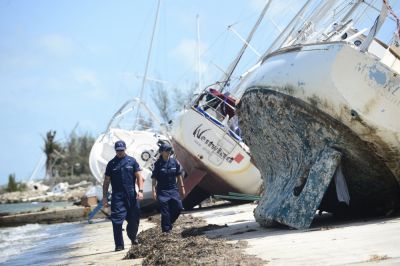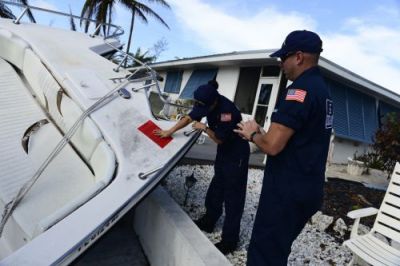Post-Hurricane Pollution Response Continues in Florida, Puerto Rico, and the U.S. Virgin Islands
OCTOBER 6, 2017—“NOAA is providing scientific support to the Emergency Support Function 10 through environmental consultation and the development and coordination of best management practices,” according to Brad Benggio, NOAA Scientific Support Coordinator (SSC).

“This partnership has allowed vessel recovery activities to continue efficiently with no adverse impact to protected species, sensitive habitats, historic and archaeological resources and tribal resources.”
Through pre-planning and previous experience, OR&R has been able to anticipate the needs of the Hurricanes Irma and Maria response organizations and has had products and services at the ready once the actual response began. OR&R has responded to many hurricane events and is working to ensure that all environmental regulations are followed to help minimize any additional damage that could be caused by response and removal operations. We have developed improved methodologies to use GIS and aerial photogrammetry to pre-identify potential sources of pollution and detrimental debris.
At this time, OR&R is preparing for yet another potentially damaging hurricane in the Gulf of Mexico.
For further information on OR&R’s pollution response after hurricanes, see Preparing for What Can Go Wrong Because of Hurricanes (2016), and Oil Spills and Hurricanes Can Take the Nation by Storm (2015).

 An official website of the United States government.
An official website of the United States government.
